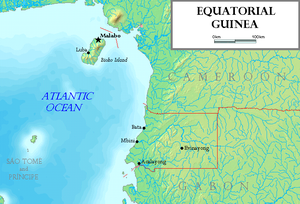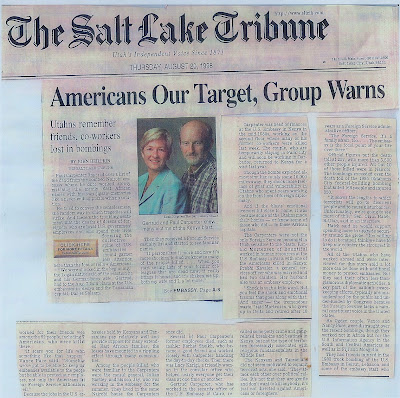Gertrud and I
are currently in Rome, having last been here in May 2009 when I wrote a post
entitled “La Dolce Vita.” This time around my post will focus exclusively on
"Lux in Arcana," a first-ever public exhibit of 100 original documents from
the Vatican's Secret Archives which we viewed in Rome's Capitoline Museums.
Here is the official website for the exhibition: http://www.luxinarcana.org/en
I was especially
impressed with the following documents which are presented in no particular
order of importance:
Petition from
Nicolaus Copernicus to Pope Paul III regarding his studies of the universe.
Date: June 1, 1542
Proceedings of the
Trial of Galileo Galilei which found him guilty of heresy for defending the
Copernican system: Various dates between 1616 and 1633:
Pope Alexander VI’s “Inter cetera bull” in which he "granted" the new lands discovered by Columbus to the rulers of Spain: March 4, 1493.
Pope Leo X’s
excommunication of Martin Luther: January 3, 1521
Emperor Charles V’s
edict at Worms establishing an imperial ban against Martin Luther: May 8, 1521
Letter from members
of the English Parliament (with all wax seals attached) to Pope
Clement VII emphasizing the importance of granting the annulment of Henry
VIII’s marriage to Catherine of Aragon so that he could marry Anne Boleyn,
and hopefully sire the longed-for heir to the throne: July 13, 1530
Letter from Russian
Tsar Aleksei I Romanov to Pope Clement X, requesting support against common
threats posed by the Ottoman Turks: October 21, 1672
Concordant between
King Henry V and Pope Calixtus II which ended the struggle over
investitures. It provided that ecclesiastical investiture of bishops be
reserved for the Church and that feudal investiture (including that of the
bishops) be reserved for the emperor. September 23, 1122.
Pope Bonface VIII’s
“Unam sanctam” stating that there is only one Church founded by Christ, and
that outside it there can be no salvation. It also states that to maintain the
universal order desired by God, popes can depose emperors and kings. It
further declares that “submitting to the Roman pontiff, is necessary for the
salvation of every human creature:” November 18, 1302
Pope Innocent X’s
brief declaring the Westphalia Peace Treaties, which ended the Thirty Years War
(1618-1648), null and void. Although this letter was never published, it
reflected the Pope’s concern that the treaties negotiated between Catholic and
Protestant diplomats would do irreparable damage to the Catholic Church:
November 26, 1648
The 1801 Napoleonic
Concordat between France and the Papacy which recognized the Catholic Church’s
pre-eminence in the life of France but guaranteed the freedom of worship to
other religions as well. It also deemed that Catholicism would no longer
be the “state religion.”
Declaration by the
College of Cardinals that the newly installed Pope, Urban VI, was an apostate
and an anti-Christ, and that he was being deposed as Pope. This was
signed shortly after the Church returned to Rome following the 70 years period
of “Babylonian Captivity” when seven French Popes resided in Avignon, France:
August 9, 1378.
A desperate,
handwritten note from Marie Antoinette from prison after she had been deposed
as Queen: December 1792 or January 1793
Proclamation of the
dogma of the Immaculate Conception signed by Pius IX which declared the Blessed
Virgin Mary free from the stain of original sin: December 8, 1854
Letter from Lucrezia
Borgia to her father, Pope Alexander VI. June 10, 1494
Abdication letter of
Queen Christine of Sweden when she converted to Catholicism: June 1, 1654
Mary Stuart’s last
letter, written to Pope Sixtus V, in which she professed her Catholic
faith. This was shortly before she was beheaded on the order of Queen
Elizabeth I: November 23, 1586.
Agreement temporarily
unifying the Greek and Latin Churches: July 6, 1439
The Lunario Novo which
eliminated 10 days from the 1582 Calendar and established the Gregorian
calendar: 1582
Letter from the
French philosopher and deist, Voltaire to Pope Benedict XIV: October 10, 1745
Report to the Vatican
by the Apostolic Nuncio to Italy on the existence of the Ferramonti
Concentration Camp: May 27, 1941.
Letter written on
silk, from Helena, the last Ming Empress to Pope Innocent X: November 4, 1650
(11th day of the 10th moon of the 4th year in
the reign of emperor Youngli).
Letters written in
1863 by Abraham Lincoln and Jefferson Davis to Pope Pius IX during the US Civil
War.
I'm sure you will
agree that this is an impressive list of documents which have had a
great impact on Western civilization and on the history of the World. We feel very fortunate to have seen the originals.














